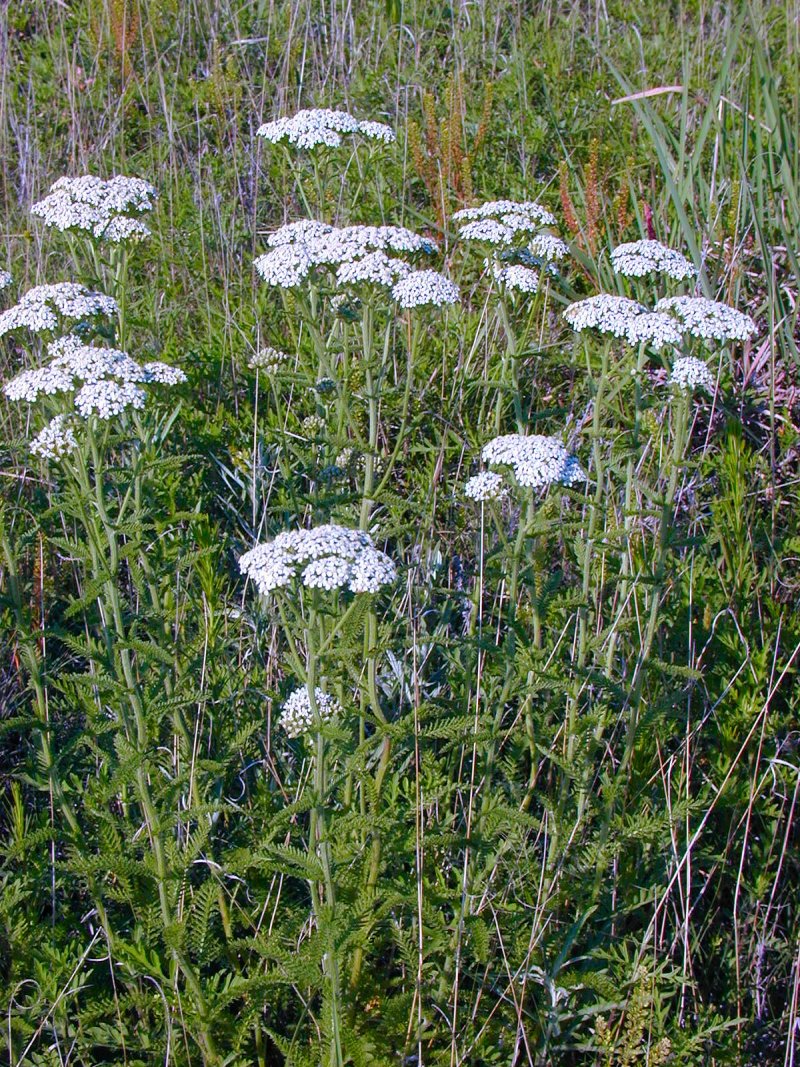
Western Yarrow (Achillea millefolium) ssp. lanulosa

Western Yarrow (Achillea millefolium) ssp. lanulosa
JUNE-JULY
Western Yarrow Achillea millefolium L. ssp. lanulosa (Nutt.) Piper (COMPOSITE FAMILY)
Western yarrow is an aromatic, rhizomatous perennial 1-2 ft tall with erect wooly-villous stems. Leaves are alternate and highly pinnately dissected. Basal leaves are petiolate, the upper ones cauline-sessile, with the blade 2-4 in. long and 1/2-1 in. wide. The composite-type heads are numerous, arranged in a flat-topped inflorescence. Each head is about 1/4 in. across with 5 white (sometimes pink) ray florets about 1/8 in. long. Disk florets are relatively few (10 to 30). The fruit is a small flattened achene. Western yarrow has a spicy aroma and has numerous purported medicinal properties. Its name comes from Achilles, who used the plant to heal wounds of his warriors. Leaves of this plant were used as a poultice for spider bites. Among the common ailments for which western yarrow has been used are influenza, gout, urinary disorders, indigestion, wounds, and a variety of others. It produces an off-flavor in milk when grazed by dairy cattle. Western yarrow has an alkaloidal poison and care should be taken in its use.